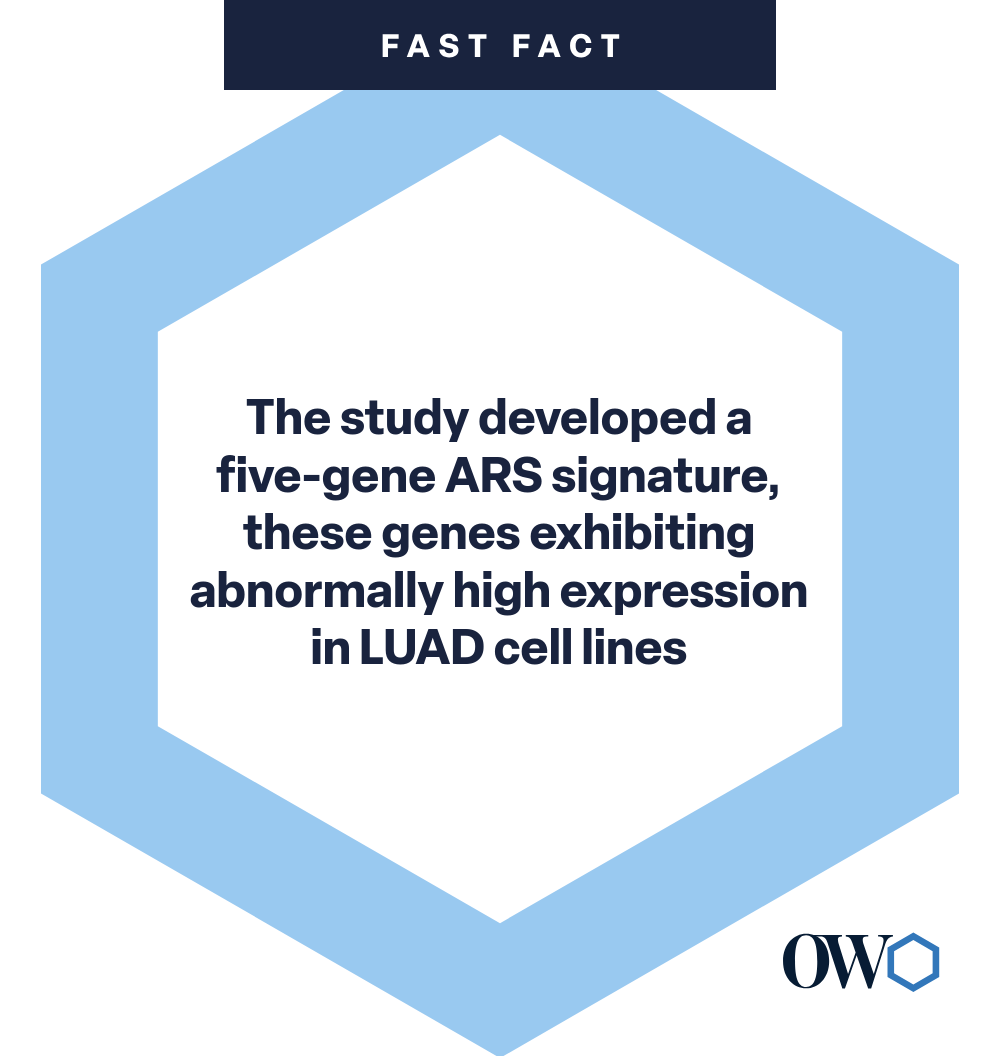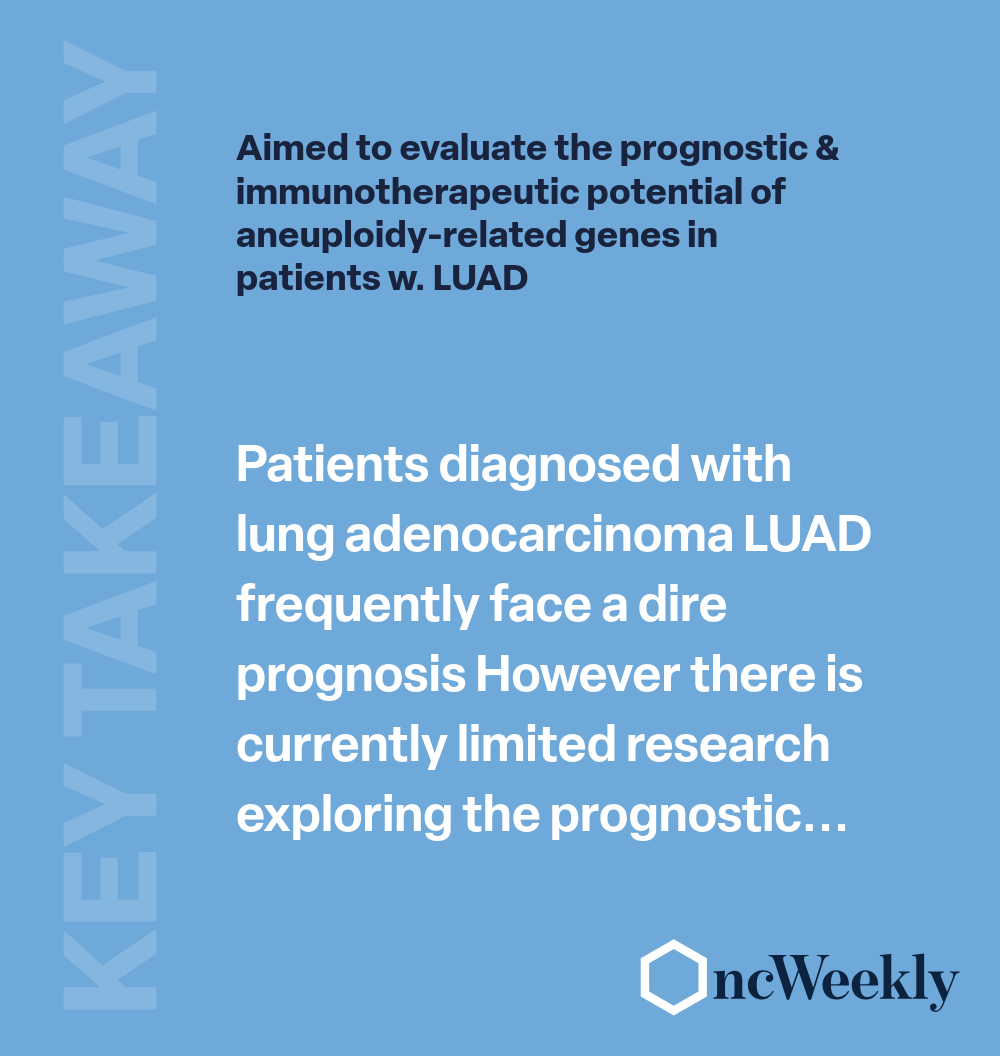KEY TAKEAWAYS
- The study aimed to evaluate the prognostic and immunotherapeutic potential of aneuploidy-related genes in patients with LUAD.
- Researchers noticed that ARS model analysis enhances LUAD diagnosis and novel therapeutics.
Patients diagnosed with lung adenocarcinoma (LUAD) frequently face a dire prognosis. However, there is currently limited research exploring the prognostic and immunotherapeutic potential of genes related to aneuploidy in LUAD.
Xiaobin Wang and the team to screen genes associated with aneuploidy in LUAD using bulk RNA sequencing data from public databases.
They employed bulk RNA sequencing data obtained from public databases to screen genes corresponding to aneuploidy by using the Spearman method. To establish an aneuploidy-related riskscore (ARS) model subsequent univariate Cox and Lasso regression analyses were conducted.
Results of the bioinformatics analyses were validated through cellular experiments. Further, LUAD cells were characterized by subtype clustering, followed by SCENIC and intercellular communication analyses. They utilized ESTIMATE, ssGSEA, and CIBERSORT algorithms to corroborate the potential association between ARS and the tumor immune environment.
The study developed a five-gene ARS signature, these genes exhibiting abnormally high expression in LUAD cell lines. Notably, elevated expression of CKS1B promoted proliferative, migratory, and invasive phenotypes in LUAD cell lines.
Patients in the low ARS group demonstrated longer overall survival times and higher degrees of inflammatory infiltration, indicating potential benefits from immunotherapy. Moreover, these patients exhibited more active responses to traditional chemotherapy drugs such as Erlotinib and Roscovitine.
In scRNA-seq analysis, 17 cell subpopulations were annotated into seven distinct clusters. Core transcription factors (TFs) like CREB3L1 and CEBPD were enriched in the high ARS cell group, whereas TFs such as BCLAF1 and UQCRB were enriched in the low ARS cell group. CellChat analysis revealed that the high ARS cell group communicated with immune cells through signaling pathways involving SPP1 (ITGA4-ITGB1) and MK (MDK-NCl).
The study provided an integrative analysis based on the ARS model and provided a potential direction for improving the diagnosis and treatment of LUAD.The authors did not receive any funding for this study.
No funding was provided.
Source: https://pubmed.ncbi.nlm.nih.gov/38938612/
Wang X, Chen J, Li C, et al. (2024). “Integrated bulk and single-cell RNA sequencing identifies an aneuploidy-based gene signature to predict sensitivity of lung adenocarcinoma to traditional chemotherapy drugs and patients’ prognosis.” PeerJ. 2024 Jun 24;12:e17545. doi: 10.7717/peerj.17545. PMID: 38938612; PMCID: PMC11210463.





